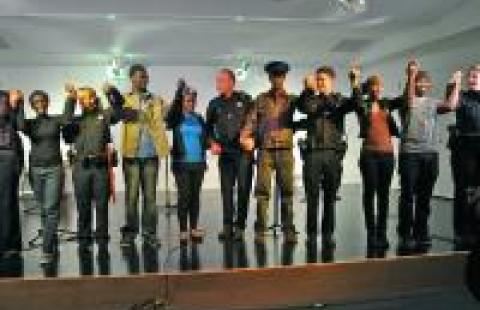What were the project goals?
Project Goals: Since 2007, with the City of Portland, Art At Work has put creativity to work delivering measurable outcomes that have improved police morale, deepened cross-cultural understanding among Public Works employee, and increased awareness & appreciation for art, local government and civic engagement. Our NEA Our Town project, Meeting Place, worked with artists to develop four neighborhoods. Art At Work Holyoke launched in 2012.
Have they changed over time?
For the first five years, introducing artmaking to Portland's municipal staff and elected officials was the primary focus, for the last two years, we partnered with neighborhood associations, businesses and arts organizations.
Who are the project partners and stakeholders?
The City of Portland, Police, Public Works, Health & Human Services, Human Resources, Portland School District, West End Neighborhood Association, East Bayside Neighborhood Organization, Bayside Neighborhood Association, Libbytown neighborhood, Portland Buy Local, Portland Trails, Creative Portland, Maine Muslim Community Center, Mayo St. Arts, Running With Scissors,
